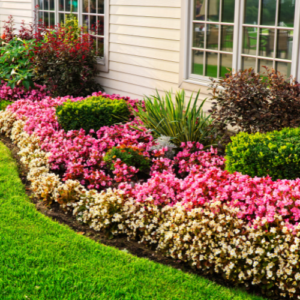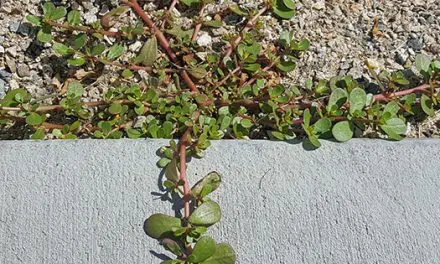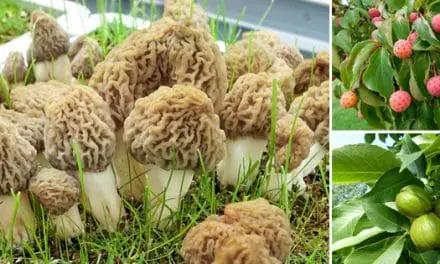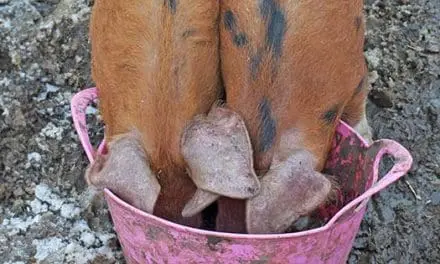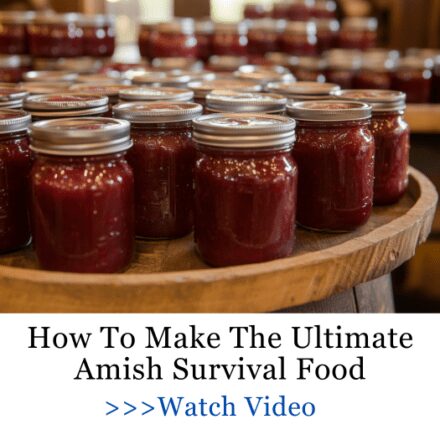There’s a reason our grandmothers waited for May to start planting, and it wasn’t just about tradition.
They knew this was when the earth hit its sweet spot—warm enough to wake the seeds, but still cool enough to keep the weeds from taking over. It’s the moment when gardens stop surviving and start thriving.
May has always been the favorite month of our grandmothers to get their hands in the soil and bring their gardens to life. But why this season and not any other?
In this guide, I’ll share timeless secrets behind why May was the month for planting in grandma’s garden. I will also enlist some practical tips to help you get started, along with her favorite veggies and flowers.
Gardening In May: Why Is It the Perfect Month for Planting?
We have all heard the tales of our ancestors gearing up with their gardening tools just when April ends. And we cannot blame them for that. The weather at this time is just mind-blowing, compelling every avid gardener to step out and cultivate something.
But what could be the reason behind this excitement? Why not any other month than May for growing greens? That is because:
Snow Melts Away
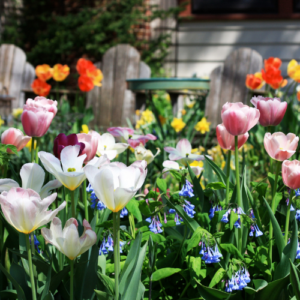
With the arrival of May, the soil is warm, and the snow completely melts away, creating a warm environment to encourage seed germination. In short, this month creates the most stable weather to get started with your greens.
Light Is Plenty, and Days Are Longer
During May, the days become a bit longer, and the sky gets clear too. With so much time and plenty of sunlight, plants receive an extra boost of energy to conduct photosynthesis. The results? A better and much more bountiful harvest.
Soil Is Renewed
May’s occasional rainy weather with warm temperatures activate the beneficial microorganisms in the soil. As a result, the dirt is in its purest form, with potent nutrients ready to hold your plants.
Moisture and Warmth Are Perfectly Balanced
The soil texture in May has a perfect balance of rain and warmth. The moisture helps in aerating the soil, while the warm temperature promotes rapid growth of the plants. This balance creates ideal thriving conditions for cold as well as warm-season plants.
Grandma’s Time-Tested May Gardening Techniques
No one can do the gardening magic like our grandparents did. For them, the field meant a canvas, and the trowel was a paintbrush. With wisdom in mind, they conquered the garden like seasoned artists, knowing how to tend to crops. Let’s not gatekeep these techniques and reveal them to you.
Sowing Early and Monitoring Closely
Sowing seeds early in the season was a top priority for gardeners of the past. She believed the earlier you start, the better the harvest. Besides, she would regularly inspect each crop to identify any signs of pest invasion or diseases.
Implementing Companion Planting
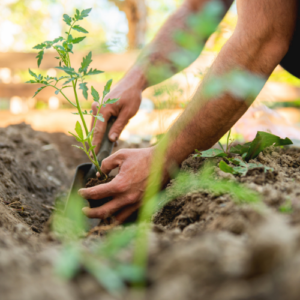
Ask any wise gardener, and they will tell you exactly which plants can grow better together. For instance, cucumbers can be planted along marigolds or tomatoes along basil to keep bugs away.
Feeding the Soil with Healthy Food
Incorporating inorganic fertilizers was never an option to make the soil healthy. Instead, traditional gardeners would use home-made compost such as aged manure or eggshells to keep the garden bed fertile.
Rain Harvesting
Whenever it rained, our forefathers would just grab a tub or barrel to collect rainwater. To them, this was a magic potion to prepare a high-quality yield that was free of chemicals.
If the idea of using rainwater the way our forefathers did sounds like something you’d like to try, there’s an easy way to bring it to life. This guide walks you through creating your own pressurized rainwater collection system, so you can harvest and use rainwater for your garden just like they did. It’s simple, efficient, and the best part? It helps you avoid using chemicals while giving your plants that pure, chemical-free care.
What To Plant in May – Grandma’s Must-Plant Vegetables and Flowers Before Last Frost
Now that you have got all the wisdom, let’s explore the flowers and veggies that seasoned gardeners recommend harvesting once spring is in full swing:
Flowers To Plant in May:
May might just be the sweet spot of spring. Warm enough to dig in the dirt without freezing your fingers off, and still early enough to give your flowers a strong head start. If you’re looking to add a splash of color to your garden (and maybe even attract a few pollinators while you’re at it), now’s the perfect time to get planting. Here’s a look at some of the best flowers to sow this month!
Marigolds: Ask any avid gardener, and they will tell you their favorite flowers to plant during May are marigolds. Of course, their sunny color brightened up the garden, but their real purpose was to scare away pests and invite pollinators to the garden.
Related: Marigold 101
Primroses: As much as we love colorful flowers, our grandmothers adored them too. To add a pop of color to their garden beds, they would usually have primroses planted as soon as May started.
Zinnias: These were every grandma’s go-to flowers for table arrangements. Their bright colors, long-lasting blooms and little to no maintenance nature made them a favorite among every level of gardener.
Nasturtiums: Every gardener loves to plant this one due to their dual nature. Their pretty petals would look great in the garden, and their spicy taste would add a punch of flavor to salads.
Echinacea: These hardy, daisy-like blooms aren’t just beautiful—they’ve been trusted for generations for their immune-supporting properties. Back in the day, people didn’t plant echinacea just for looks. They grew it for homemade teas and remedies, and of course, the bees loved it too.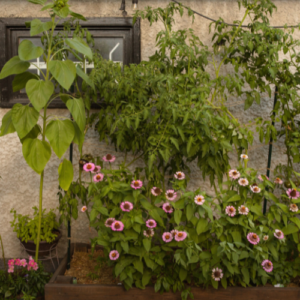
Yarrow: A true old-time favorite. Yarrow’s feathery foliage and clusters of tiny flowers made it a must-have in every cottage garden. But it wasn’t just for show.Our great-grandmothers knew it could be dried for teas or used fresh to help stop bleeding from minor cuts.
Chicory: This humble blue flower used to line country roads and backyard plots alike. While some grew it for its beauty, others knew its roots could be roasted for a coffee substitute. Either way, it’s tough, charming, and a quiet nod to simpler times.
If you’re looking to take your garden (and your remedies) to the next level this may, I’ve got just the thing. This kit put together by Nicole Apelian includes seeds for many of the plants I talked about just now, along with a free guide that’ll walk you through how to grow them, harvest them and make the most of their healing properties.
Not only will your garden look beautiful, but you’ll also have hundreds of natural remedies right at your fingertips. Ready to grow something that’s as useful as it is stunning? This kit’s the perfect start!
Best Vegetables To Plant in May:
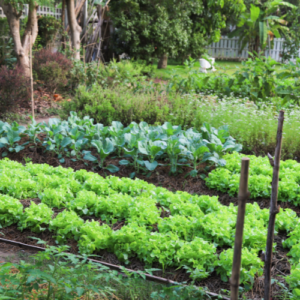
May is prime time for planting veggies. No more surprise frosts, longer days, and soil that’s finally warmed up enough to welcome seeds and seedlings alike. There’s no shortage of delicious, fast-growing crops you can get in the ground this month. Here are some of the best vegetables to plant in May for a hearty summer harvest!
Green Beans:
You can always rely on these as they are the easiest and fastest-growing veggies. Growing them is simple; you can either have them planted along neat rows or have them placed along simple trellises.
Cucumbers:
The secret to perfect pickles starts with the right cucumbers, and it all begins with a sunny spot and compost-rich soil. Sowing them in May ensures a strong start, giving them the ideal environment to thrive and produce crisp, flavorful fruits.
Lettuce:
Growing your own lettuce means having a steady supply of crisp, garden-fresh greens right at your fingertips. Simply sow the seeds, keep them watered, and in no time, you’ll be harvesting vibrant, juicy leaves perfect for any salad.
Tomatoes:
These held a special place in grandma’s heart. She’d plant them deep, right up to the bottom leaves, so they’d grow strong, resilient roots. With a few crushed eggshells in the hole for calcium and a basil plant nearby for flavor and pest control, her tomato plants were always the pride of the patch.
There was also a little secret she used that she picked up from the Amish: burying fish heads near the plants. Sounds wild, right? But the Amish knew the secret: as the fish decomposed, it released rich, natural nutrients into the soil, supercharging the tomatoes’ growth. I strongly recommend you try this trick out too.
Carrots:
Tiny seeds, big payoff. A clever trick for even sowing is to mix carrot seeds with a bit of sand before sowing. Once the seedlings emerge, take care to thin them gently. The key to sweet, straight carrots? Thoughtful spacing, nutrient-rich soil, and a little patience.
Final Thoughts
Our grandma’s beautiful, blooming, and thriving garden taught us that growing plants is more than just sowing seeds. It is about creating a lively and nurturing space for the greens while respecting the rules of nature.
As you approach May, don’t forget to start planning to plant the vegetables and flowers grandma swore by in this guide. With the right sowing techniques on hand and the best selection of crops, you will be ready to take over a garden that flourishes with beauty and abundance.
So, what are you waiting for? Roll up your sleeves and start preparing for the season now!
Happy planting!
You Will Never Run Out Of Medicine If You Grow This (Video)
Gardening Tips Learned from Native Americans


